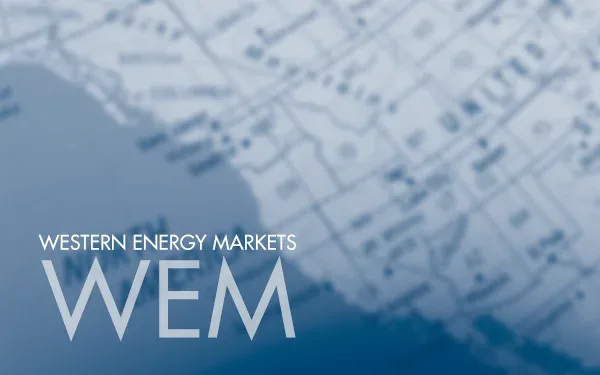"An important milestone” – enhanced shared governance approved by ISO and Western EIM
An enhanced governance framework was approved on Friday, August 20 by the California ISO Board of Governors and the Western Energy Imbalance Market (EIM) Governing Body, giving the two entities shared approval authority over a wider range of issues applicable to the Western EIM for certain tariff proposals submitted to the Federal Energy Regulatory Commission (FERC).
The new framework also spells out the continuation of an advisory role for the Western EIM Governing Body and a formal dispute resolution process, if needed; requires majority votes by both bodies on decisional items; and joint meetings.
The Western EIM Governing Body and the ISO Board, following a presentation at a joint virtual meeting on a second round of governance updates recommended by the EIM’s Governance Review Committee, approved the changes in a unanimous vote of each body. With extensive stakeholder participation, the committee worked to forge a consensus on the changes.
“On behalf of all of us at the ISO, I just wanted to say that we will continue to work every day to build on this important moment and to help strengthen trust, collaboration and coordination with our many partners across the West,” Elliot Mainzer, the ISO’s president and CEO, said after the August 20 votes.
“To both the Governing Body and our Board of Governors today, thank you very much for your affirmative votes. We’re really looking forward to next steps.” Mainzer also had praise for the volunteer members of the Governance Review Committee and for the “extraordinary leadership” of Therese Hampton, the committee chair.
The Western EIM Governance Review Committee has worked since late 2019 through a public stakeholder process to advance proposed governance revisions. The first round of governance changes approved by the two governing boards came in May and dealt with such issues as selection of EIM Governing Body members and engagement with stakeholders.
“Because the Western EIM will continue to expand and evolve, the important steps we’ve taken today help make sure we have the right governance structure in place for greater collaboration and coordination among the growing Western EIM membership and the California ISO,” Angelina Galiteva, the ISO Board of Governors chair, said in a media release that went out after the latest changes were approved.
“I am excited for the future of energy in California and the greater West, and appreciate the Governance Review Committee members' tremendous work and dedication to inclusion, transparency, and thoughtful deliberation.”
Anita Decker, chair of the Western EIM, was also extremely positive about the results.
“The Governance Review Committee’s recommendation was founded in substantial stakeholder engagement and symbolizes a dynamic time for the West,” Decker said. “We commend the Governance Review Committee’s impressive effort to work together with stakeholders to create this framework. The Western EIM’s Governing Body and the ISO’s Board of Governors approval of the Governance Review Committee’s recommendations is an important milestone and marks a turning point in collaboration and decision-making that will benefit an expanded Western market.”
Before the changes can take effect, the ISO Board of Governors must approve certain implementing amendments to existing governance documents. The EIM Governing Body is scheduled to provide its advisory opinion on the amendments Sept. 8, followed by the Board of Governors’ consideration Sept. 22.
In a memo sent to the two governing bodies before the Aug. 20 joint meeting, Stacey Crowley, the ISO’s vice president of external and customer affairs, spelled out one of the key reasons the changes were made after extensive input from stakeholders.
“Currently, the EIM Governing Body has primary authority only for changes to real-time market rules that are EIM-specific, meaning that they apply uniquely or differently to EIM entity balancing authority areas, or for changes to generally applicable real-time market rules where the primary driver for the change is an issue specific to the EIM entity balancing authority areas,” she wrote.
“In practice, this has meant that some tariff proposals that apply to EIM entities or to other market participants within EIM balancing authority areas in their role as EIM participants have been outside the EIM Governing Body’s approval authority.” This proposal increases the scope of issues and provides a clear rule that will be easier to apply to proposed tariff changes.
Since its launch in 2014, the Western EIM has deployed sophisticated technology to find and deliver the lowest-cost energy to its members, while enhancing reliability and reducing emissions.
The Western EIM’s 2021 second-quarter results showed the cumulative benefits achieved in the real-time energy market have reached $1.42 billion.
